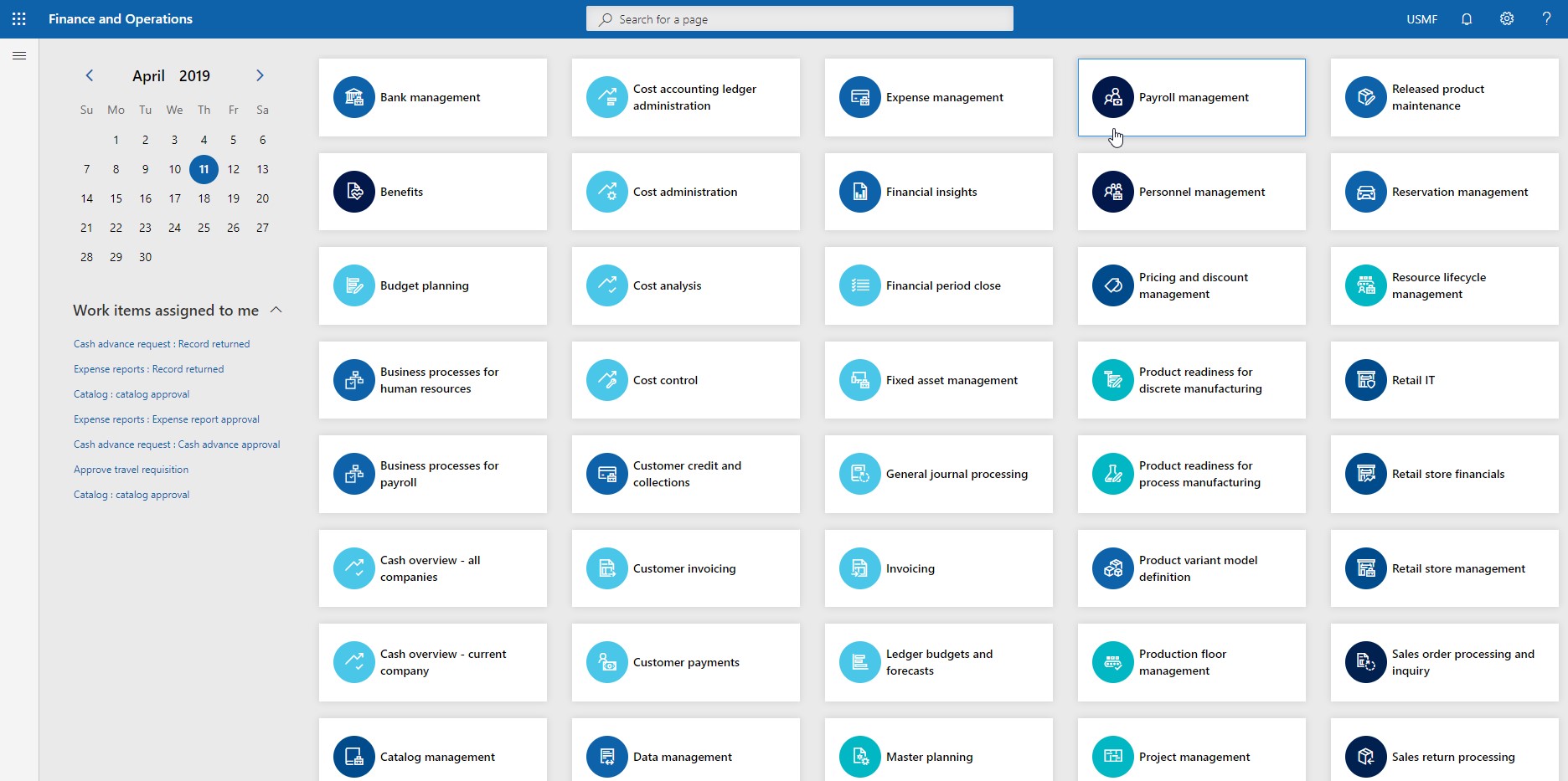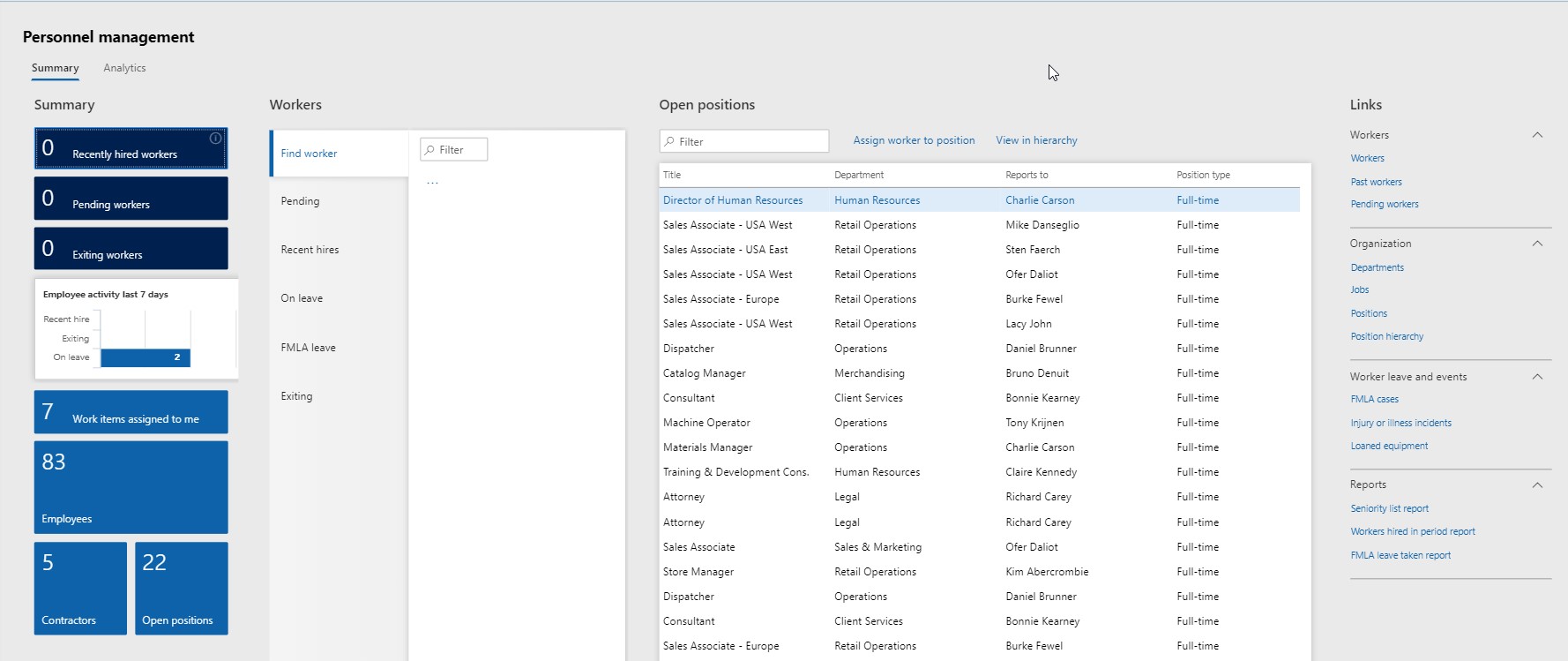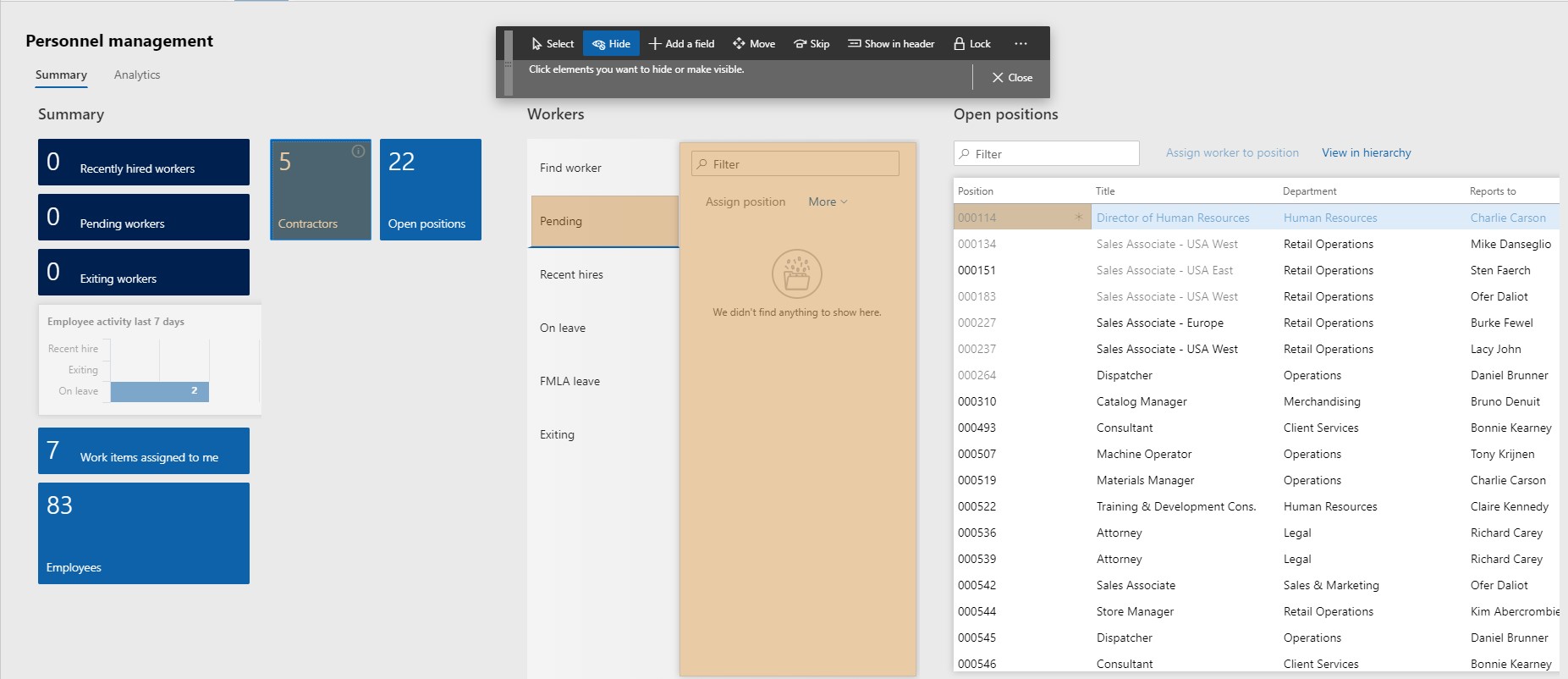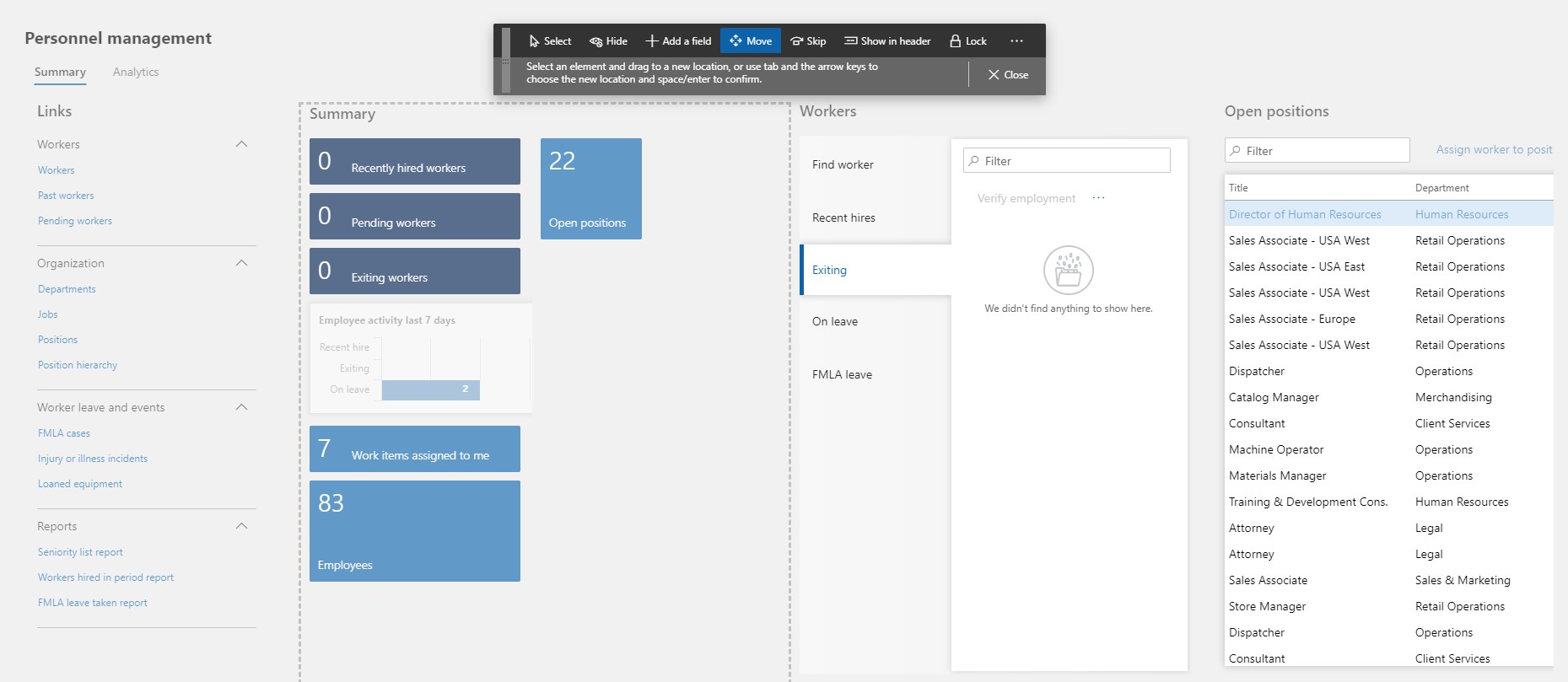There are several navigation options you can use in Dynamics 365 for Finance and Operations to arrive at the same information and the same pages. In this article, we will take a look at the features and benefits of using workspaces to view and personalize the presentation of information.
Landing Page Access
Workspaces provide an overview of activities that a user performs in Dynamics 365 for Finance and Operations. They are centralized collections of system information based around specific topics. There are many default workspaces that are provided on the D365FO landing page, as shown in this screenshot. Each tile shown here opens a different workspace focusing on a different set of tasks or priorities.

Typical Workspace Features
The exact layout of each workspace varies depending on its focus, and some workspaces, such as Cost analysis, provide multiple tabs to aid with the organization of specific content.
In this screenshot, you can see the layout of Personnel management Summary tab, which is a typical representation of a workspace tab. On the far left, the Summary section includes tiles with counters and other high-level information, providing information at a glance about important tasks and information, including recent hiring activity and total numbers of employees.

Workspaces typically include at least one center section similar to the two shown in this workspace. In the case of Personnel management, these sections focus on the ability to look up, filter, and review important information about employees and open positions, providing quick information about overall personnel status. It’s important to remember that every default workspace includes pre-defined information that is designed to be helpful in the same way.
On the right, the Links section provides quick access to important pages, which are organized into sections based on their purpose. Again, these links will be specific to the topic of the workspace. For example, the Links in the Personnel management workspace include links to the Jobs page, FMLA cases, and a list of departments.
Modifying Workspaces
The default workspace design and information presentation are intended to provide helpful information. You can enhance this experience for yourself by hiding and moving information and panels using the Personalization toolbar. Keep in mind that any modifications you make using the toolbar are specific to your profile, and no other users will see the changes you have made.
Toolbar Access
To access the Personalization toolbar from a workspace (or any other page in D365FO), click the Options tab in the Action Pane and select Personalize this form, as shown in the screenshot on the left. The two toolbar options we will look at are the Hide and Move options, shown in the screenshot on the right.

Hiding Fields and Tabs
When you select the Hide tool in the Personalization toolbar, you can select and de-select fields and tabs to hide them from view. This can be helpful, for example, if you do not want to see a specific column in a page list, or if you do not want to see a specific tab in a tabbed list. D365FO will shade hidden elements to indicate them when you are using the Personalization toolbar, and the changes take effect once you click Close. In the screenshot below, you can see that several elements have been selected to be hidden:
- The Contractors tile in the Summary panel
- The Pending tab in the Workers panel
- The Position column in the Open positions panel

Moving Panels and Tiles
When you select the Move tool from the Personalization toolbar, you can click and drag areas of the screen to reorder them. In the screenshot below, you can see that the Links panel is now on the far left of the workspace, and different page elements are outlined with gray dashes. When you click Close, the changes will be established and the dashed lines will disappear.

Resetting a Workspace
You can also use the Clear option on the Personalization toolbar to reset a personalized workspace to the default settings. In the screenshot below, you can see the option available from the drop-down list. Remember that once you clear personalization settings, you may need to refresh the workspace in order to see the default information again.

Using these tips, you can take advantage of the default layout and access options in D365FO workspaces, as well as personalize workspaces to better fit your viewing and information access needs.
Learn More
Want to learn about Dynamics 365 for Finance and Operations? Visit academy.rsmus.com for eLearning courses and information about our hosted training classes in Denver! Or contact our Microsoft Dynamics experts at RSM (855) 437-7201.
Daniece Rainville

 RSMUS.com
RSMUS.com